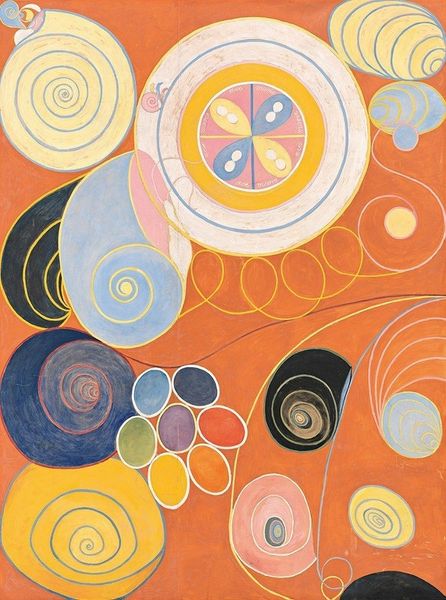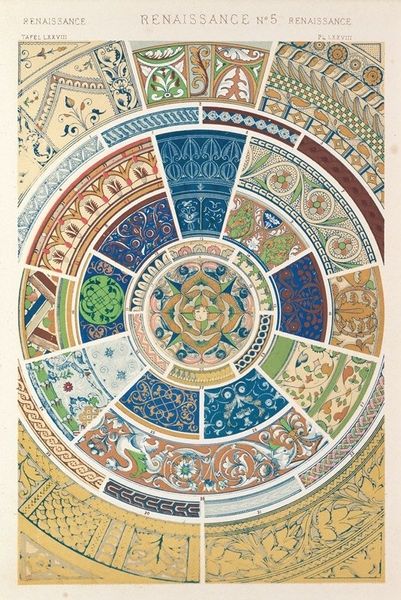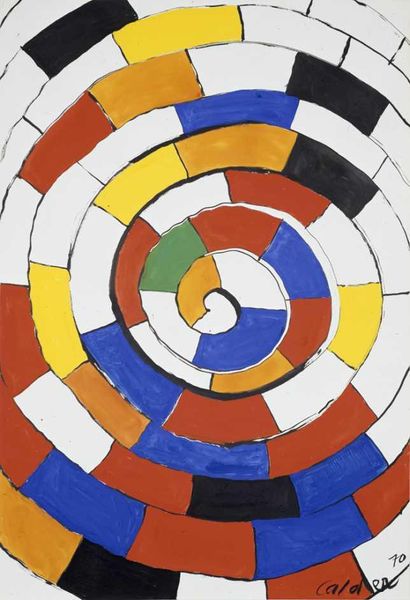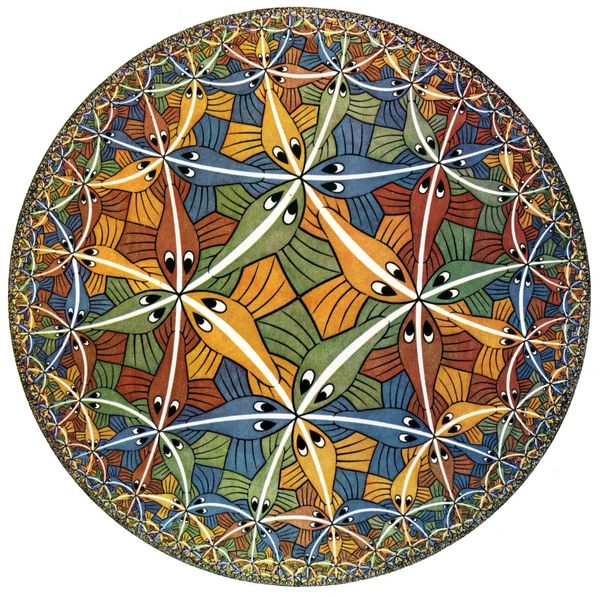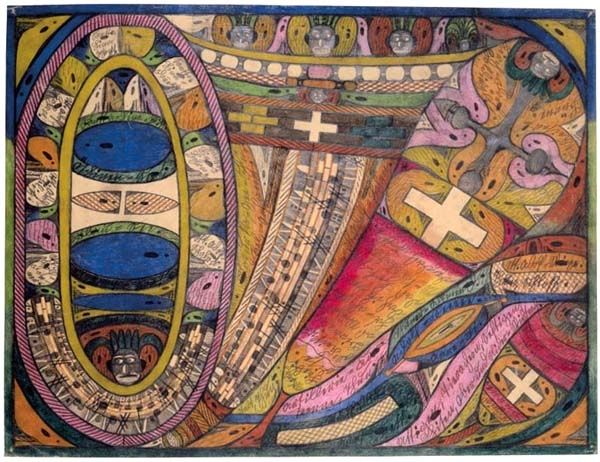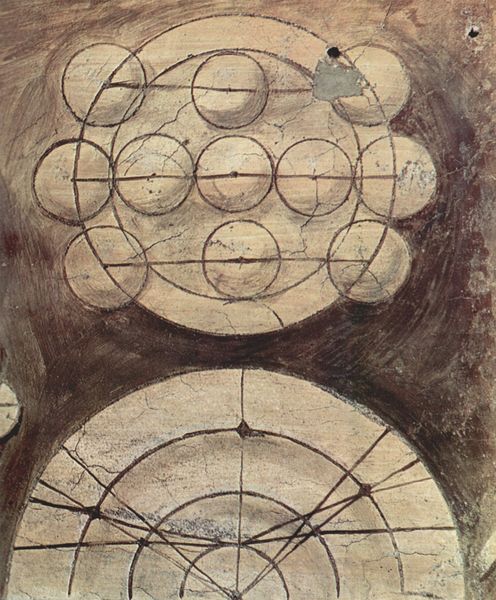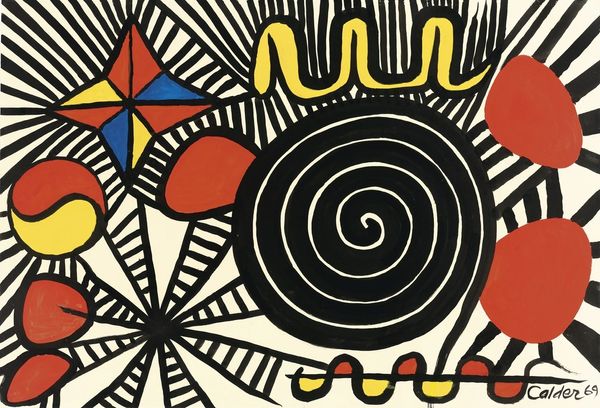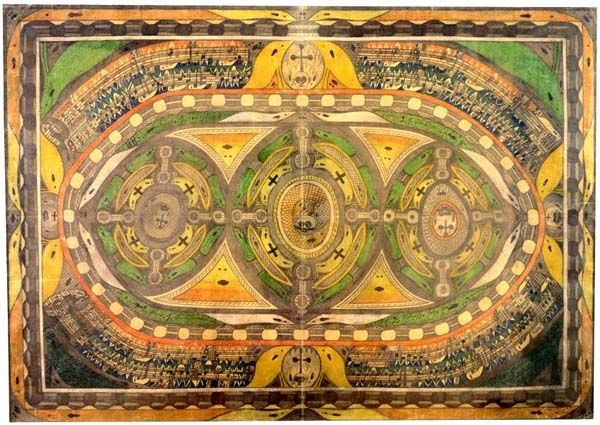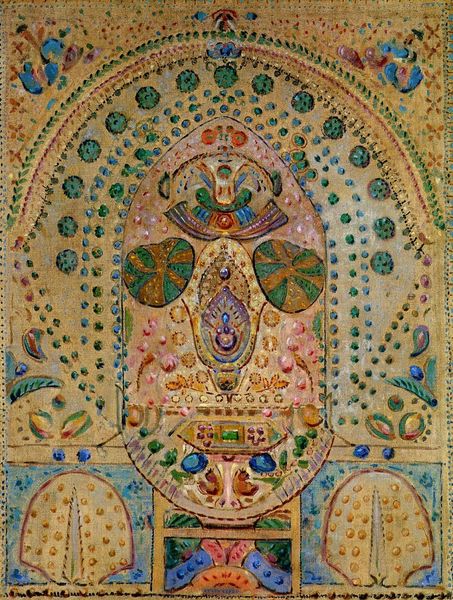
painting, oil-paint
#
art-nouveau
#
non-objective-art
#
painting
#
oil-paint
#
abstract
#
form
#
geometric
#
abstraction
#
line
#
symbolism
Copyright: Public Domain: Artvee
Curator: Standing before us is Hilma af Klint's "Evolution, No. 15, Group IV, The Seven-pointed Stars," painted in 1907 using oil paints. Editor: My initial impression is that of a mystical diagram, a symbolic flower viewed through the lens of geometry. The limited color palette—red, white, blue, and gold—lends a starkness, despite the overall organic impression. Curator: Indeed. Klint was deeply invested in spiritualism and theosophy, and this work is from her "Paintings for the Temple" series, meant to visualize unseen dimensions and the evolution of consciousness. You notice the repeating letter "W"? That stands for "Wolf," part of Klint's personal symbolic language. Editor: The petals, or should I say lobes, emanate from a central core, each containing a unique swirl and letter. This combination of abstract shapes and quasi-alphabetic forms fascinates me, given its place within a historical context of artistic experimentation. How was the reception of this symbolic language during the early 20th Century? Curator: Well, af Klint specified that her abstract works should not be shown until twenty years after her death. She knew the public wouldn’t grasp their full meaning in her time. She feared their power, or maybe just their misinterpretation. Editor: An act of visionary humility. It's quite clear that this work moves beyond aesthetics. It serves almost as a repository for spiritual energies; each color and line carrying profound meaning. Even the red background resonates—a stark womb of creative potential. The whole artwork looks like some cosmic seed ready to sprout into the modern world. Curator: Her works anticipate much later trends, defying the usual narrative of purely formal development from representation to abstraction. This is not only formal. This art becomes the material representation of her consciousness as it seeks the truth, like those in the ancient Mystery schools. It challenges established assumptions about how movements emerged, shifting our understanding about the course of modernism. Editor: Absolutely, examining Klint allows us to consider how spiritual concerns intersect with, and even precipitate, formal innovation. These paintings have given us access into understanding not just Klint, but how art reifies the cultural need to explore new metaphysical awareness. Curator: Precisely. Klint offers a window into a crucial part of modernism's cultural history.
Comments
No comments
Be the first to comment and join the conversation on the ultimate creative platform.
